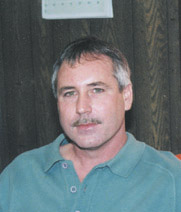|
By Lois Kerr
In that 75th year of factory operations, Gorsek faced challenges both internally at the factory and externally from the sugar industry itself, with the plummeting sugar prices due to an oversupplied market. "It's been a continually changing business environment for everyone, from growers to corporate management," he remarks. Because of the changing business climate, Gorsek believes the factory priorities have changed from what they were when he first arrived as the new district manager last August. "We are adjusting our short-term direction and goals due to changes in priorities from a year ago," he comments. "One of our most important goals focuses on letting employees have the freedom to use their expertise and skills to the fullest potential." To accomplish this, managers allow supervisors and employees to take responsibility, to learn self-sufficiency and to develop skills. "We need every employee in the factory to take personal responsibility for production, quality, safety and environmental issues," Gorsek explains. "If our employees believe in taking this kind of ownership, we will develop a stronger skilled work force. The more they become involved with the factory, the more they understand and contribute towards decisions on improving operations." He adds, "It matters less how much knowledge I have. The people on the factory floor are the ones who get the job done. We are using the potential of the people here at the factory more than we ever have before, and hopefully they find this rewarding." As well as increasing employee contribution and involvement, Gorsek also expects the factory crew will identify and correct bottlenecks within the factory operation. "We will work on correcting the problems, and prepare to take advantage of opportunities when they arrive," Gorsek states. Gorsek points out that two years ago, the company installed a tower diffuser with the potential to handle an 8,000-ton daily slice. However, several processes in the factory limit the slice capacity at the current time. The Sidney factory must overcome two major factory bottlenecks specifically, those of crystallization capacity, and evaporation and boiler limitations, before slice capacity can reach 8,000 tons per day. The first step necessary to rectify the current limitations involves increasing the crystallization capacity on the sugar end of the process. Gorsek expects to see the addition of a continuous vacuum pan within the next few years. "This will give us the ability to handle different qualities as well as higher volumes of juice," Gorsek advises. "The addition of a continuous vacuum pan will provide for less juice going to our thick juice storage, which in turn creates room in juice storage for increased slice. Once we've created room in thick juice storage, we can address the second major bottleneck." The second bottleneck involves evaporation and boiler limitations. Increased evaporation capabilities are necessary to achieve the goal of increasing slice to 8,000 tons per day. "We're hoping to see the increased capacity in four or five years," Gorsek says. "However, remedying these bottlenecks are major undertakings, and it depends on the health of the industry how fast we can move on this." The entire sweetener industry currently suffers extreme stress due to the 30-year low price of sugar. "The sugar industry is under a lot of stress right now," Gorsek says. "However, the sugar industry has always been a cyclical market. Much attention will focus on the Farm Bill up for renewal in two years, to provide some stability." Gorsek points out that 75 years ago, both growers and company faced many of the same problems they face today. In the early years, growers and the company worried about the weather during growing season, about beet storage over the winter, and about the fluctuating sugar prices, just as they worry about these factors today. "However," notes Gorsek, "the big difference today is that there seems to be no room for error in today's climate. There's less flexibility in today's market, and everyone has to do more with less. We don't have the corporate resources available that we did years ago. More responsibilities are handled at the local level." "As a manager," he continues, "I need to work towards providing stability in an unstable market. We need a successful operation, and we can't afford any weak links." In spite of the many problems facing the sugar industry today, Gorsek feels the Sidney Holly Sugar plant has a lot of potential and faces a prosperous future. "There is so much opportunity here," he comments. "We have the potential for additional acres, and we will be more competitive and cost efficient." He concludes, "Sidney has the most opportunity with respect to many other factories. Sidney offers the best opportunity to compete in the volatile sugar market. We face difficult times until prices sort themselves out, but the mutual cooperation and dependence between growers and factory will get us through to a prosperous future." |
 Don Gorsek, district manager of Sidney Holly
Sugar, began his duties as district manager of the Sidney plant last
August, guiding the factory successfully through its 75th campaign. He
gives credit to the employees for achieving four new production records
this past year during the 75th campaign. New plant records include total
tons sliced for the entire campaign, total tons sliced on a daily basis,
total number of hundredweights of sugar produced and a new plant record
for daily hundredweight sugar production.
Don Gorsek, district manager of Sidney Holly
Sugar, began his duties as district manager of the Sidney plant last
August, guiding the factory successfully through its 75th campaign. He
gives credit to the employees for achieving four new production records
this past year during the 75th campaign. New plant records include total
tons sliced for the entire campaign, total tons sliced on a daily basis,
total number of hundredweights of sugar produced and a new plant record
for daily hundredweight sugar production.